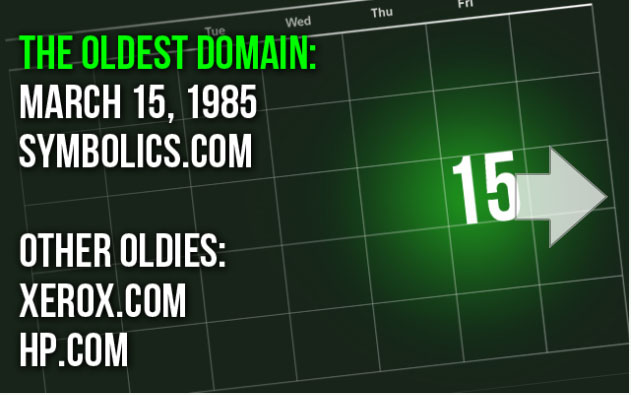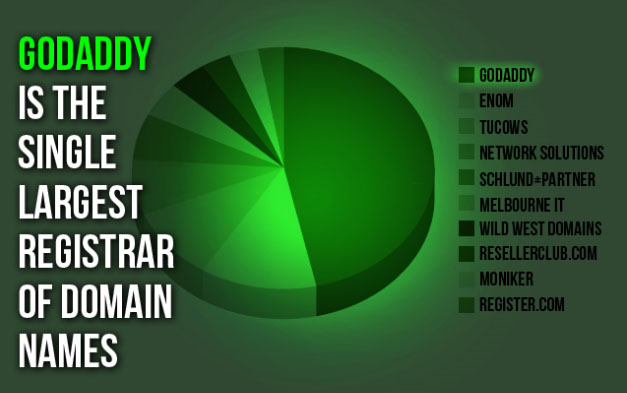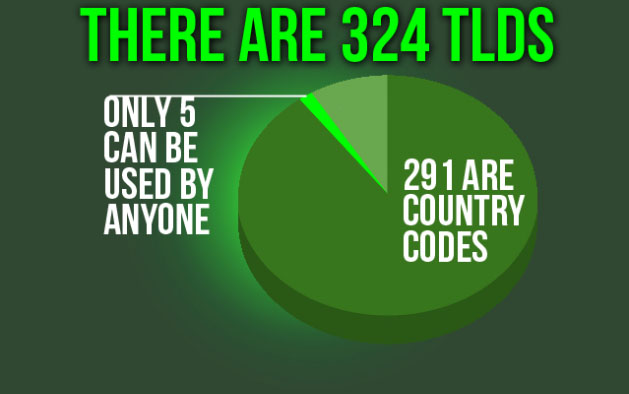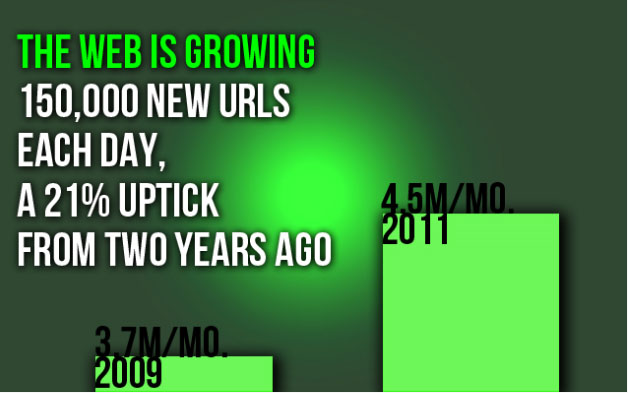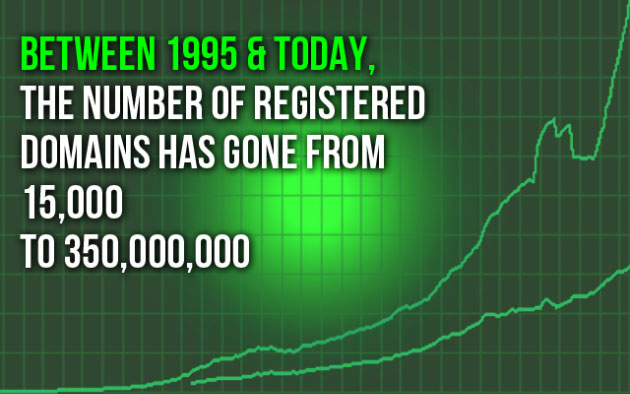On Monday, the Internet Corporation for Assigned Names and Numbers (ICANN), approved the creation of generic top-level domains (TLDs) for brands and organizations.
Historically, only 22 general use-approved TLDs, which include .com, .org, .net and a host of others, have existed across the web. A number of country code top-level domains (like .me and .ly) also exist and throughout the years, many individuals not from those countries have used those domains to give their domain or brand a more memorable (or in some cases, shorter) URL.
The promise of more generic TLDs is immense because it could conceivably open up new domain extensions and opportunities for a wider variety of brands, organizations and services.
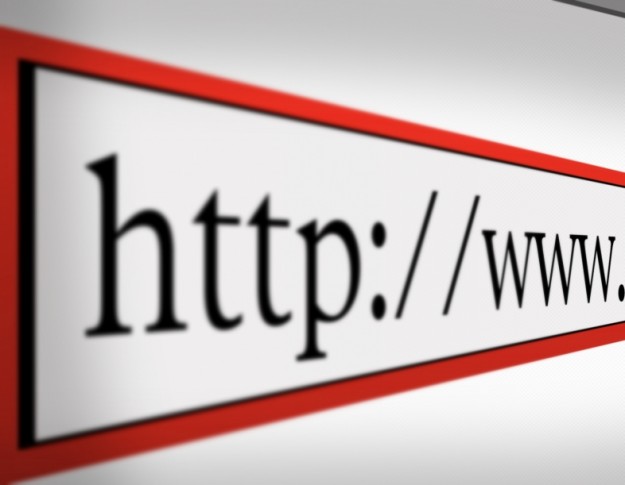
Still, the entire TLD process is complicated and difficult to understand. We’ve been sucked down the rabbit hole of ICANN and the gTLD application process in the past, and it isn’t something we recommend for the faint of heart.
We read (or at least skimmed) the 352-page draft New gTLD Applicant Guidebook [PDF] to get to the bottom of what the gTLD process is, how much it costs, and ultimately, why regular users should care.
1. How Many New TLDs Will Be Issued?
ICANN has said between 300 and 1,000 new gTLDs could be created per year under the new program.
Still, this number assumes ICANN can process and deal with that many applications in a timely matter. Thousands of applications could take years to evaluate and process.
ICANN says it is limiting the first batch to 500 applications and subsequent batches — or rounds — will be limited to 400 applications.
2. What Is the Application Period?
Applications will be accepted for new TLDs between January 12, 2012 and April 12, 2012. This will be for the first round — or batch. Subsequent application periods will become available in the future.
3. How Much Will Registration Cost?
The evaluation fee from prospective applicants is $185,000. According to the gTLD Applicant Guidebook, a $5,000 deposit is required “at the time the user requests an application slot within TAS, and a payment of the remaining $180,000 submitted with the full application.”
This is just to start the evaluation process. Additional fees may be required during the course of the application review process, and this fee doesn’t include additional infrastructure fees that a gTLD may generate.
4. How Long Will the Evaluation Process Take?
ICANN estimates that the evaluation process could be as short as nine months or as long as twenty months, depending on the application, intended usage and other issues.
ICANN expects the first new gTLDs to appear within the year, but it’s likely going to be 2013 before end users see the new domains in action.
5. What Happens if Two Entities Apply for the Same gTLD?
It depends on the timeline. If one of the users has already completed process before another party has applied, the TLD will be delegated on a first-come, first-serve basis.
If neither applicant has completed the process, ICANN has a more detailed resolution process in place. The applicants will be given points in four different categories. The applicant that amasses the most points, based on this set of criteria, will win the domain. In the even of a tie in points, an auction will take place and the TLD will go to the highest bidder.
Additionally, community-based applications (that is, applications from an organization or entity and not a specific brand or company) will have the opportunity to have a priority evaluation in this process.
ICANN will notify applicants who are part of a contention set. Applicants can decide to try to reach their own resolution together (for instance, a compromise might be able to be reached for a more generic TLD like “soda” or “pizza”).
6. What About Trademarks?
This is going to be a very, very tricky situation for ICANN to mitigate. Although users do not need to own a Trademark to apply for a new TLD, the evaluation review will take any existing trademarks (from all over the world) into account when looking at the application.
Users cannot “reserve” a TLD of a trademarked name, they must go through the same process as everyone else. In addition to checking for trademarked names for a TLD, ICANN will also look at similar names that may be trademarked or might be confusing.
Additionally, trademark owners or other interested parties can file an objection during the evaluation process.
7. How Much Does Filing an Objection Cost?
The Applicant Guidebook is still just a draft, so we don’t have the final figures; but it will cost the thousands of dollars to file an objection — not including any additional mediation or court costs.
One of the reasons that ICANN is charging so much for its evaluation fees is that it is doing lots of due diligence to try to settle the feasibility of a TLD before granting it to an organization. Moreover, ICANN wants to prevent domain squatters from grabbing TLDs.
8. If I Get a New TLD, Do I Have to Let My Competitors Use It?
Once a new TLD is granted, the owner essentially becomes a registrar. That means that if he or she wants to let anyone willing to pay a registration fee get their own domain on that TLD, they can. Alternatively, the owner could limit the use of the domain to certain entities or prevent people without certain qualifications from gaining access to the TLD.
9. Will This Have Any Real Impact on My Life as a Web User or a Brand?
Not in the immediate future. However, it’s important to remember that it took years for the current TLD structure to become a viable and affordable strategy for individuals and non-Fortune 100 companies.
Twenty years ago, it wasn’t common for brands, small businesses or individuals to have their own domains. Today, a staggering number of registrars exist. It took a long time for the TLD market as we know it today to really start to open up.
I bought my first domain name in 1999, I think I paid $45 for registration that first year. Prior to 1998 or so, domain registration was a multi-hundred or multi-thousand dollar investment. I now pay $8 or $9 for a .com or .net domain, and that includes private registration.
It will take time for the process and oversight aspect of the new gTLD policies to be worked out and automated. However, we expect that community-driven TLDs for things like .music, .sports and .film become more available in the future.
Yes, actually owning a customized TLD, like .google or .apple or .facebook might be something that only large corporations or government entities can afford to do, but with time, we expect that even that process will start to change, just as they did in the .com and .net space.
Source
 Follow
Follow


